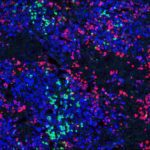About
Acquired immune deficiency syndrome (AIDS), tuberculosis (TB) and malaria are the primary infectious diseases causing death world wide. TB is responsible for a third to a half of human immunodeficiency virus type 1 (HIV-1)–associated deaths, particularly in sub Saharan Africa and South East Asia. Malaria is widely spread in tropical Africa and accounts for approximately 800,000 deaths every year. In addition to these pathogens, 170 million people are infected with hepatitis C virus (HCV), which may lead to chronic liver disease, liver cirrhosis and hepatocellular carcinoma. Because of shared routes of transmission, HCV co-infection is recognized as a major cause of morbidity and mortality among HIV-1 infected persons.
Effective drugs to control these infectious agents are limited and treatment is made even more challenging by the development of drug-resistant pathogens. Importantly, co-infection with one or more of these pathogens limits the efficacy of available drugs. The epidemiological and clinical features of co-infected subjects is well documented, however, there is a paucity of basic scientific studies addressing the molecular interaction(s) between these pathogens. Variant pathogen strains are known to influence infection and disease outcome, however, the underlying mechanism(s) are unknown.
PathCo consortium propose that pathogen evasion and dysregulation of host immune responses play a key role in co-infection associated morbidity. We will test this hypothesis by developing in vitro and ex vivo co-infection model systems to study pathogen interactions. The specific objectives of this project are to improve our understanding of pathogen co-infection effect(s) on host innate and adaptive immune responses and to develop new approaches to dissect pathogen interactions: ranging from the genesis of fluorescent labelled viruses to state-of-the-art tissue explant culture systems and novel humanised mouse models. Translational studies of infected subjects will define pathogen-specific effects on host immune responses and consequences for disease progression. It is imperative that such interactions are elucidated before evaluating new prophylactic or therapeutic strategies in co-infected individuals.






